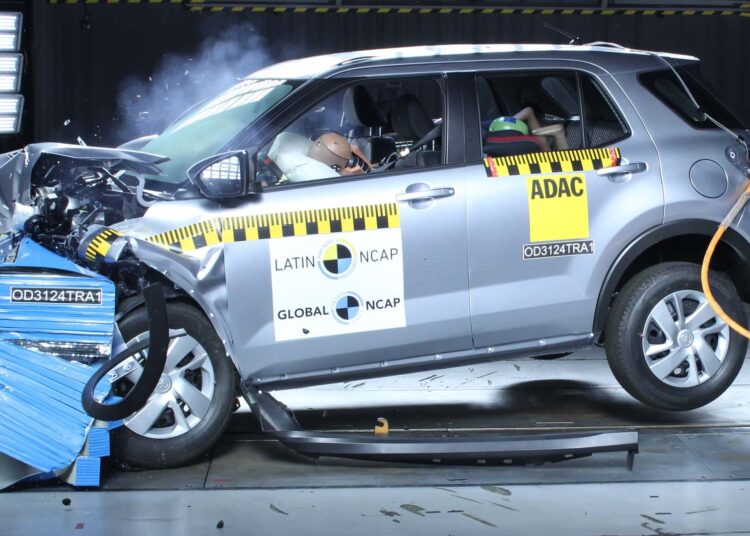First things first–what the heck is the Raize? It might look like a junior RAV4 but there aren’t any connections between the two models. The Raize (a name obtained by combining “rise” and “raise”) is Toyota’s version of the Daihatsu Rocky, a subcompact crossover that has been on sale since late 2019. Latin NCAP recently got its hands on one for a crash test, but it didn’t end well.
Also sold as a Subaru Rex and Perodua Ativa, the Toyota Raize disappointed in the crash test by earning a single star. It may be 2024 but the Indonesian-market model comes as standard with just two front airbags. In Mexico, for example, the model gets six by including two side airbags and another two curtain airbags. The Raize didn’t fare well in Latin NCAP’s evaluation, but not just because of its lack of those extra airbags we normally take for granted.
According to the experts from the New Car Assessment Programme for Latin America and the Caribbean, the Raize exhibited an “unstable structure” in the front impact. In addition, it also offered only “marginal protection to the driver’s chest.” The front collision test was performed at 40 mph. In the side crash test at 31 mph, Toyota’s small crossover showed a “relevant intrusion in the passenger compartment,” therefore increasing the risks of injuries.
It got zero points in the side pole impact test because it lacked standard side head protection. Latin NCAP points out that the Raize is offered with advanced driver-assistance systems but not in the Latin NCAP region, not even as an option. In Indonesia, the Raize GR Sport does get the Toyota Safety Sense suite of driver assistance systems: lane departure warning, lane departure prevention, pre-collision warning, pre-collision braking, adaptive cruise control, and front departure alert.
The range-topping version also has six airbags, rear cross-traffic alert, hill start assist, and something called Pedal Misoperation Control. It prevents the driver from accidentally pressing the accelerator pedal instead of the brake while parking. However, Latin NCAP tested a lesser configuration, hence why it was rated poorly.

The crossover scored only 41% for Adult Occupant Protection, 72% for Child Occupant Protection, 59% in the Pedestrian Protection and Vulnerable Road Users category, and 58% for Safety Assist. Stephan Brodziak, Latin NCAP Chairman, said:
“It is disappointing that Toyota once again engages in selling low-safety cars for certain countries in the region, such as the Raize. We know that the brand can achieve better performances in vehicle safety, so we strongly call for the company to reconsider its safety equipment strategy and subject its models to safety evaluations so that consumers know their real performance.”
Alejandro Furas, Secretary General of Latin NCAP, declared:
“Latin NCAP urges Toyota to change its approach, improve basic safety equipment in cars, and volunteer the cars in Latin NCAP to show consumers their performances. In a scenario of global concern about safety certifications in some Toyota cars, it is proven once again the need for a standardized vehicle safety labelling that includes the Latin NCAP star rating.”
The Raize is only one of several new cars that have disappointed in crash tests in recent times. Late last year, the Australasian New Car Assessment Program (ANCAP) gave the MG5 and Mahindra Scorpio a zero-star rating. In mid-2023, the Citroën C3 also “earned” zero stars from Latin NCAP. At the end of 2022, China’s JAC E10x got zero stars from Latin NCAP.

17 Photos
Toyota
Read the full article here


























